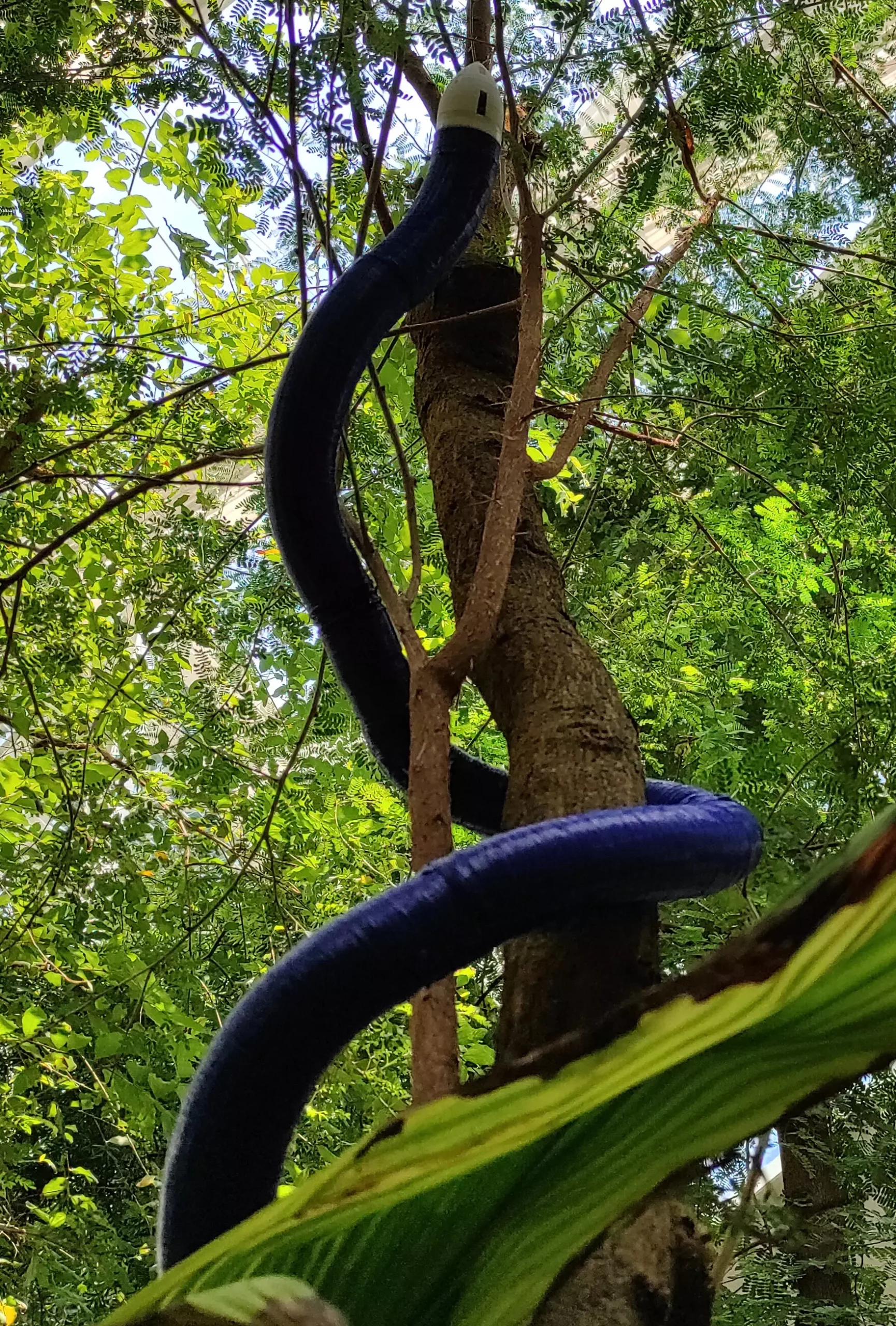In a groundbreaking development, a group of researchers at Fondazione Istituto Italiano di Tecnologia in Italy, in collaboration with a colleague from the University of Montpellier in France, have successfully created a remarkable robot that can 3D print its own body to grow longer. This innovative technology combines the fields of robotics and 3D printing, resulting in the creation of a snake-like robot named FiloBot. The team published their findings in the prestigious journal Science Robotics, unveiling the immense potential this discovery holds for various applications in both controlled and unstructured environments.
FiloBot boasts an unconventional design that sets it apart from traditional robots. Resembling a snake, this unique robot features a rotating head responsible for creating additional body mass through 3D printing. This continuous rotation enables the elongation of the robot, offering unparalleled adaptability. The researchers have pioneered an engineering marvel by integrating the 3D printer ink, a type of plastic, within the head of the robot. As the head spins, it efficiently prints body material, thereby extending itself. The direction and manner in which FiloBot grows can be specifically programmed, such as towards light or against gravity, allowing it to mimic the growth pattern of vines.
The 3D printing capabilities of FiloBot are a result of meticulous planning and engineering. The robot’s head contains not only the printer but also sophisticated electronics that respond to external signals from sensors. These sensors enable precise control over the output of the printer, allowing for adjustments in the speed of rotation and the amount of ink supplied. Such a remarkable level of control enables the researchers to steer the growth direction of the robot with utmost precision.
The possibilities arising from this groundbreaking invention are vast and may revolutionize various industries. One potential application lies in monitoring unstructured or natural environments, where FiloBot can navigate and interact with its surroundings autonomously. Its ability to adapt its growth pattern to reach difficult-to-access areas makes it an ideal candidate for estimating avalanche or landslide risks and testing pollution levels. Additionally, FiloBot has the potential to construct autonomous structures, simplifying and expediting the process of building in arduous or hazardous environments. The robot’s versatility and adaptability make it an invaluable tool for scientific exploration and environmental research.
As science and technology continue to evolve, the collaboration between robotics and 3D printing presents unimaginable possibilities. FiloBot’s innovative design and capabilities lay the groundwork for future advancements in the field of soft robotics. The self-growing nature of the robot opens doors to endless applications where adaptability and flexibility are paramount. While its current uses are promising, it is only a glimpse into the vast potential this technology holds. The researchers behind this breakthrough continue to explore new avenues for FiloBot, pushing the boundaries of what is possible in the realm of robotics and 3D printing.
The development of FiloBot represents a monumental step forward in the field of robotics and 3D printing. With its ability to print its own body and adapt to various environments, this self-growing robot has the potential to transform industries and revolutionize scientific exploration. The future looks incredibly promising as robotics and 3D printing continue to merge, opening up new horizons for advancements in technology.



Leave a Reply